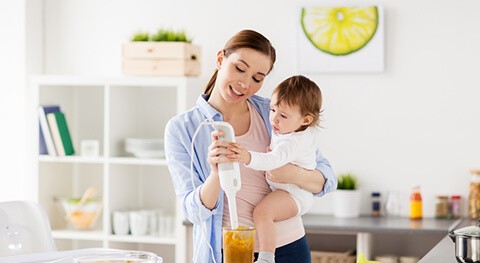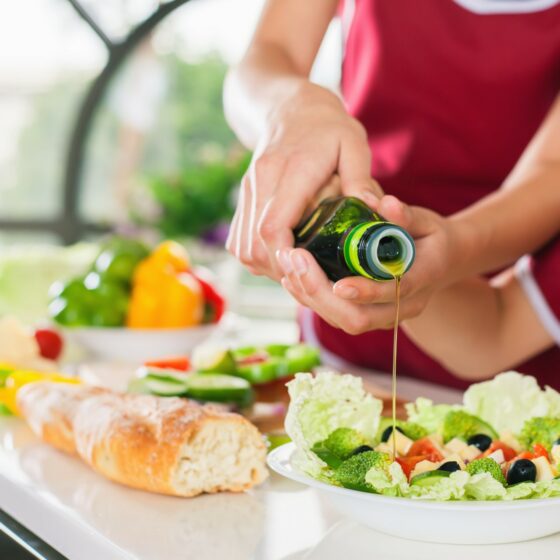Making Homemade Puree Baby Food
Not sure where to start with making your own pureed baby foods? See how easy and cost-effective it can be.

Sure, store-bought jars of baby puree are convenient to feed your baby. But there is something very satisfying and nurturing about making your baby’s first foods yourself.
By making your own purees, you have complete control over what you are feeding your baby. You can also reduce the amount of packaging and waste in your home – all you need in order to make purees are some fresh fruits and vegetables. It’s much cheaper, too. The cost of baby food is up to three times the cost of making it yourself.
Before you get started
Babies are more prone to food-borne illnesses than older children or adults, so it is very important that you are careful with your preparation. Always wash your hands before handling foods and make sure your bench or work area is clean.
The food itself should be rinsed thoroughly, and always cook to recommended internal temperatures to avoid cross-contamination.
Choose your method of cooking
Most fruits, vegetables and grains need to be cooked before you can puree them. You can choose from a range of methods – if you have other kids and a busy kitchen, then go with whatever works! Each method has pros and cons in terms of ease and nutritional value:
- Steaming – quick and easy, steaming retains maximum nutrients and you can use the leftover water as stock for pureeing
- Boiling or stewing – while very easy, this method loses more nutrients than steaming
- Baking or roasting – a big batch of roast vegetables is easy to pop in the oven, and they retain most of their nutrients
- Microwave cooking – very easy for small quantities, but just watch out for uneven cooking
- Pressure cooking – this takes a little more effort and equipment, but is great for retaining nutrients
Choose your foods
Most babies can handle a wide range of first foods. Often, it’s a matter of trial and error to work out what they like.
The type of food you’re cooking will determine how you puree it. For example, roasted pumpkin can simply be mashed with a fork; while thicker-skinned vegetables like beans or peas will need to be pushed through a sieve or whizzed up in a blender.
Steamed pears or apples will need to be popped into a blender to turn into a puree. Many soft fruits, like avocado and banana, don’t need to be cooked or blended – simply mash with a fork.
To make a baby cereal, grind uncooked oatmeal, brown rice or barley in a coffee grinder, food processor or blender. Then, cook it in water for about 15 minutes to get a thin, soupy consistency.
Meats can be pureed, too. Make sure it is cooked to well-done before blending and feeding your baby.
Want to know more? Call us on 1800 842 098 or Live Chat now.
Track your baby’s development
Get month-by-month advice on your baby’s development



